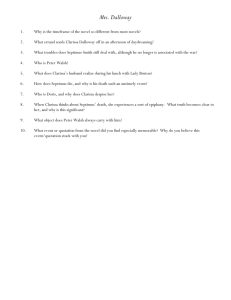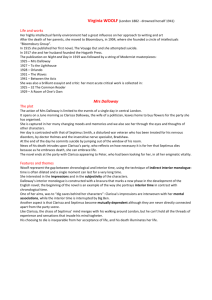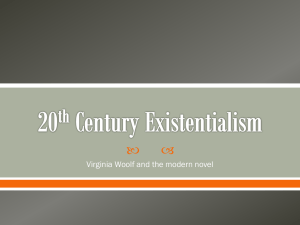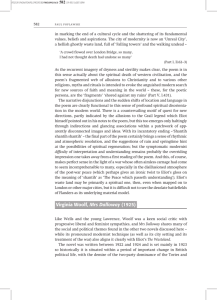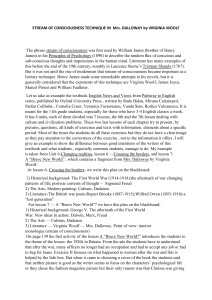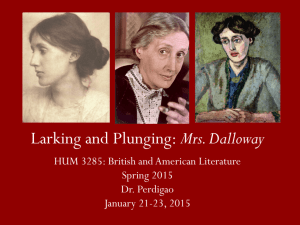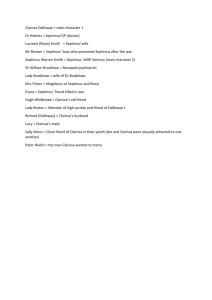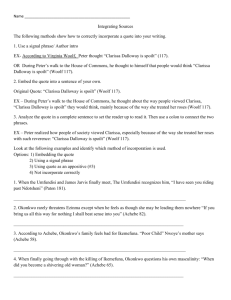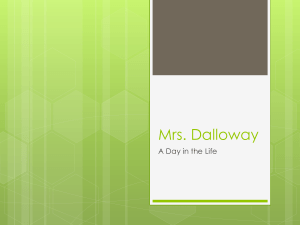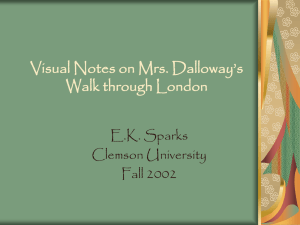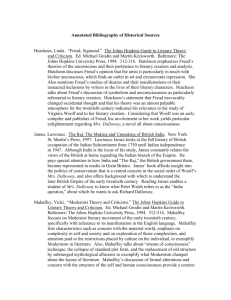Modern Novel 1890-1930 - lecture handout
advertisement
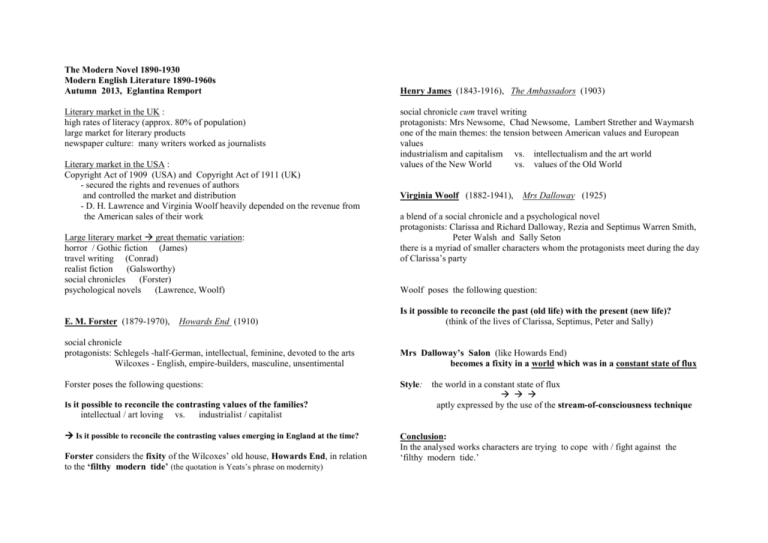
The Modern Novel 1890-1930 Modern English Literature 1890-1960s Autumn 2013, Eglantina Remport Literary market in the UK : high rates of literacy (approx. 80% of population) large market for literary products newspaper culture: many writers worked as journalists Literary market in the USA : Copyright Act of 1909 (USA) and Copyright Act of 1911 (UK) - secured the rights and revenues of authors and controlled the market and distribution - D. H. Lawrence and Virginia Woolf heavily depended on the revenue from the American sales of their work Large literary market great thematic variation: horror / Gothic fiction (James) travel writing (Conrad) realist fiction (Galsworthy) social chronicles (Forster) psychological novels (Lawrence, Woolf) E. M. Forster (1879-1970), Howards End (1910) Henry James (1843-1916), The Ambassadors (1903) social chronicle cum travel writing protagonists: Mrs Newsome, Chad Newsome, Lambert Strether and Waymarsh one of the main themes: the tension between American values and European values industrialism and capitalism vs. intellectualism and the art world values of the New World vs. values of the Old World Virginia Woolf (1882-1941), Mrs Dalloway (1925) a blend of a social chronicle and a psychological novel protagonists: Clarissa and Richard Dalloway, Rezia and Septimus Warren Smith, Peter Walsh and Sally Seton there is a myriad of smaller characters whom the protagonists meet during the day of Clarissa’s party Woolf poses the following question: Is it possible to reconcile the past (old life) with the present (new life)? (think of the lives of Clarissa, Septimus, Peter and Sally) social chronicle protagonists: Schlegels -half-German, intellectual, feminine, devoted to the arts Wilcoxes - English, empire-builders, masculine, unsentimental Mrs Dalloway’s Salon (like Howards End) becomes a fixity in a world which was in a constant state of flux Forster poses the following questions: Style: Is it possible to reconcile the contrasting values of the families? intellectual / art loving vs. the world in a constant state of flux aptly expressed by the use of the stream-of-consciousness technique industrialist / capitalist Is it possible to reconcile the contrasting values emerging in England at the time? Forster considers the fixity of the Wilcoxes’ old house, Howards End, in relation to the ‘filthy modern tide’ (the quotation is Yeats’s phrase on modernity) Conclusion: In the analysed works characters are trying to cope with / fight against the ‘filthy modern tide.’
